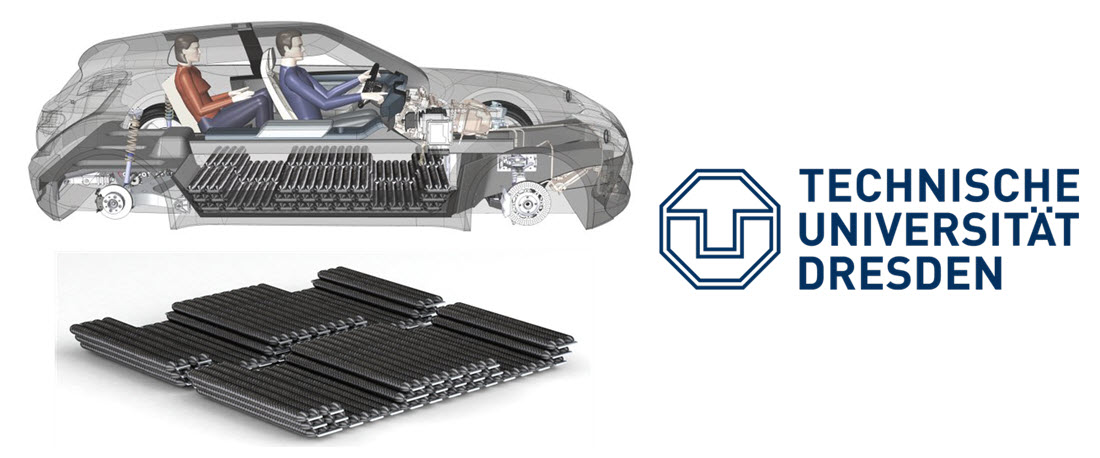
- Innovative Hydrogen Pressure Storage System for Optimized Integration into the Structure of a Vehicle
- The project, therefore, focuses on the development of tank container systems in flat design.
At the start of the “Decade of Hydrogen” proclaimed by the Hydrogen Council at the beginning of 2020, the Institute of Lightweight Engineering and Polymer Technology (ILK) at the TU Dresden is making a significant input into making road traffic emission-free in the long term through its participation in the BRYSON project (BauRaumeffiziente HYdrogenSpeicher Optimierter Nutzbarkeit) funded by the Federal Ministry of Economics and Energy.
The aims of the project consortium, consisting of BMW AG, ILK, Leichtbauzentrum Sachsen GmbH, WELA Handelsgesellschaft mbH and Munich University of Applied Sciences, is to develop new types of hydrogen pressure storage systems. These should be designed in such a way that they can be easily integrated into universal vehicle architectures. The project therefore focuses on the development of tank container systems in flat design.

The multi-cell storage system enables efficient use of the limited space in modern vehicle designs.
© TUD/ILK
For this purpose, the ILK is developing chained tubular storage tanks in close cooperation with Leichtbauzentrum Sachsen GmbH and herone GmbH, which are manufactured from semi-finished thermoplastic fibre composite products using braiding processes. The use of highly productive braiding technology offers the possibility of reducing the manufacturing costs of hydrogen tanks for fuel cell vehicles and improving competitiveness compared to battery electric vehicles.

Integration concept to accommodate the hydrogen tank in the floor of the InEco which was developed at ILK © TUD/ILK
The use of semi-finished thermoplastics also allows easy recycling of the tank structures after their use, further improving the overall ecological balance of the Dresden approach.
 © Christian Hüller
© Christian HüllerChair of Lightweight Design and Structural Assessment
Prof. Dr.-Ing. habil. Maik Gude
Read the most up to date Fuel Cell and Hydrogen Industry news at FuelCellsWorks




